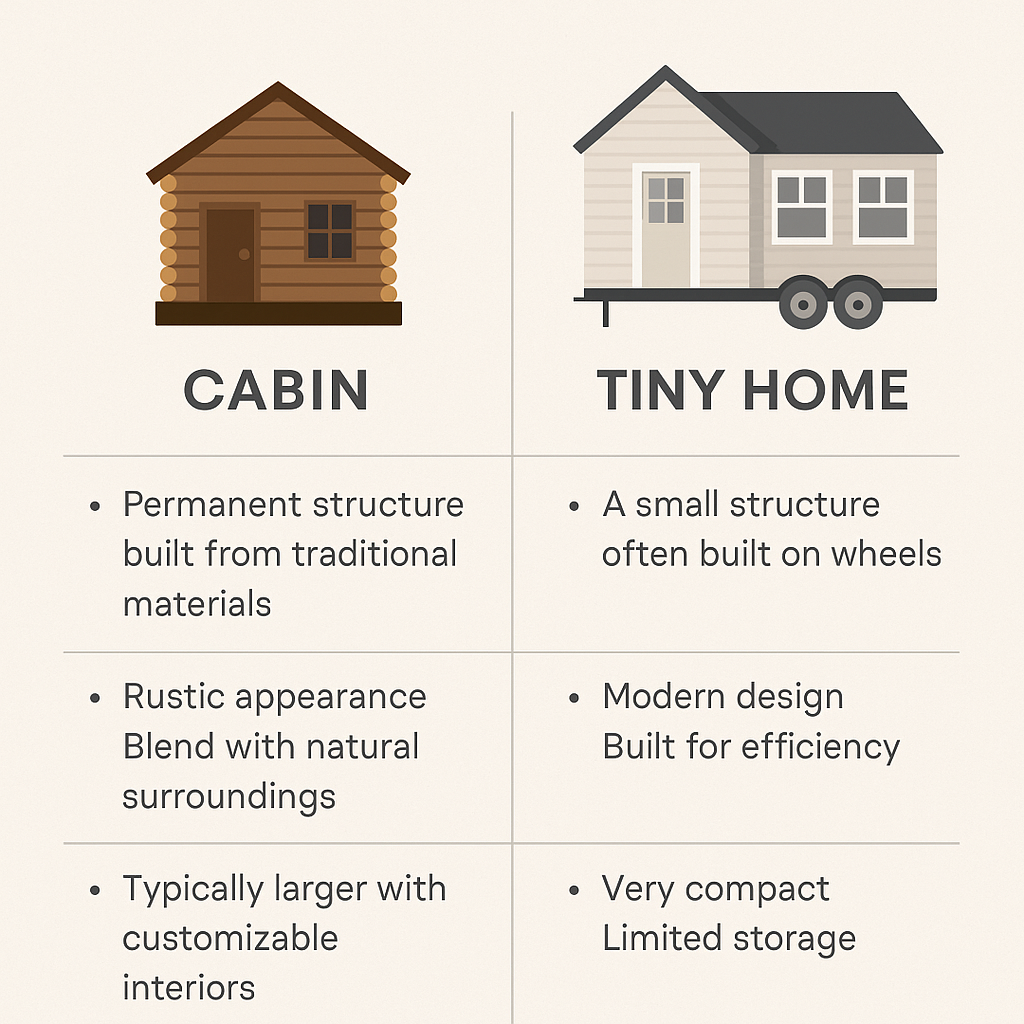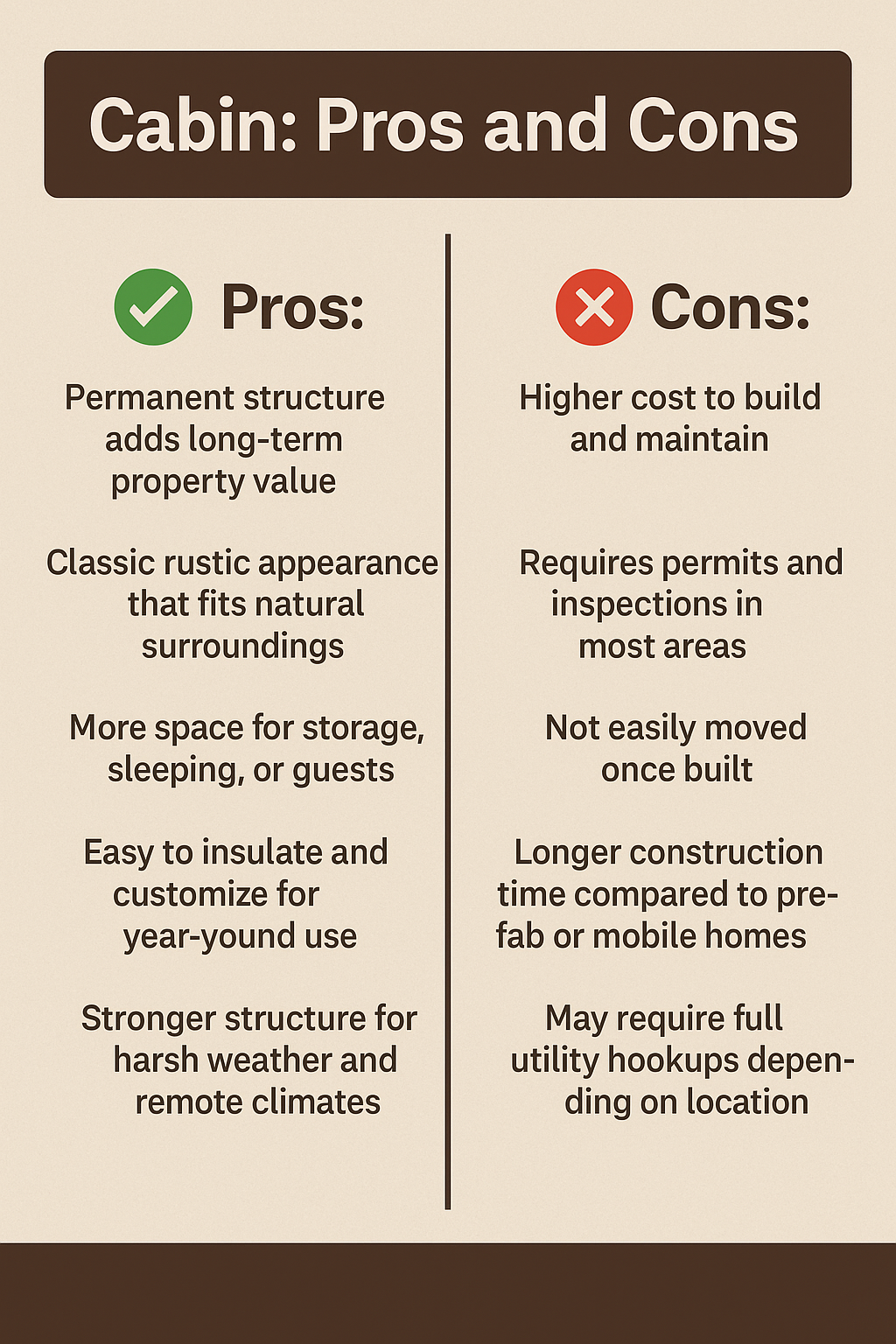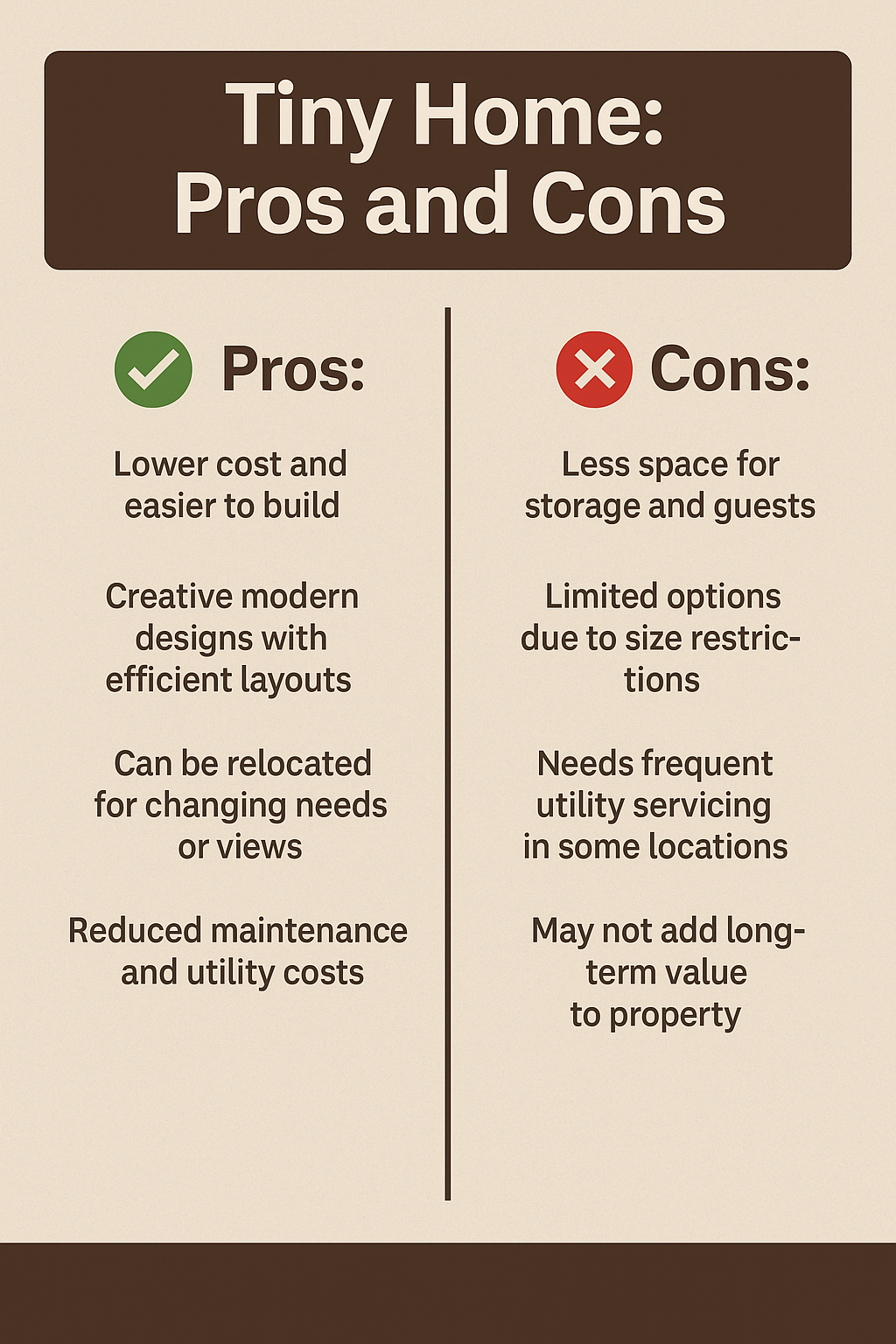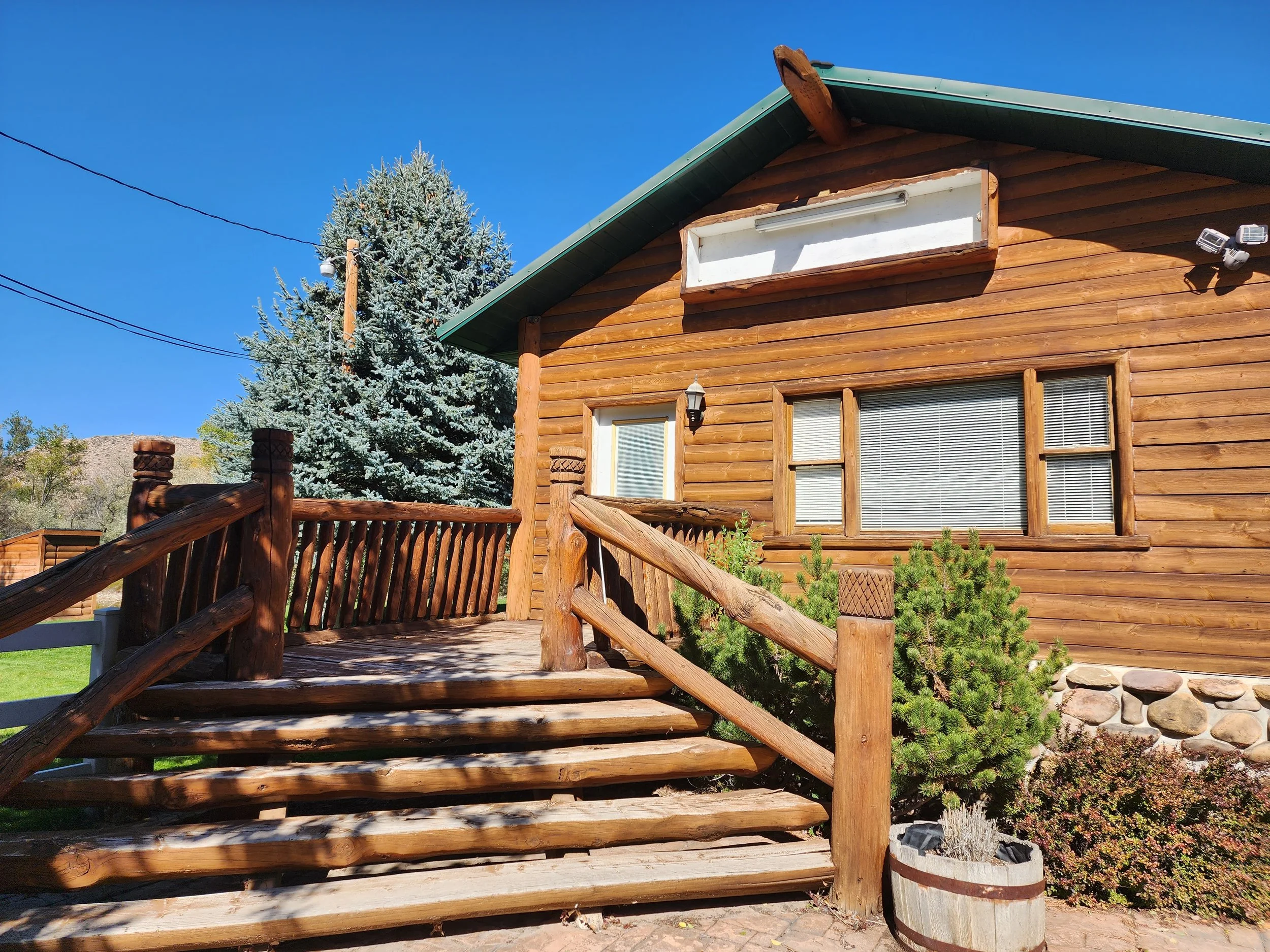Cabin vs. Tiny Home: Which Is Right for Your Property?
Thinking about building on your land but not sure whether a traditional cabin or a modern tiny home fits your goals best? Both offer comfort, simplicity, and a low-maintenance lifestyle—but they come with different price tags, building requirements, and long-term flexibility. Here’s a side-by-side breakdown to help you decide.
What’s the Difference?
A cabin typically refers to a small, permanent structure built from traditional materials like wood logs or framing lumber. Cabins are often rooted in rustic charm and may be used as weekend getaways, hunting shelters, or vacation homes.
A tiny home is a compact, often mobile structure under 400 square feet. Built with efficiency in mind, tiny homes can be placed on trailers or foundations and may use modern materials and off-grid technologies.
Cabin Pros and Cons
Pros:
Classic look and feel – Great for rustic or mountain settings
More space – Often larger than tiny homes
Permanent structure – May boost long-term property value
Customizable layouts – Easier to modify with porches, lofts, or wood stoves
Cons:
Higher cost to build – More materials, labor, and permitting
Less mobility – Not easily moved once built
May require full utilities – Off-grid setup is possible but requires planning
Tiny Home Pros and Cons
Pros:
Affordable and efficient – Lower cost to build and maintain
Mobile-friendly – Can be moved or repositioned
Off-grid potential – Ideal for solar, composting toilets, and minimal utilities
Modern aesthetic – Often cleaner, brighter, and built with smart storage in mind
Cons:
Limited space – Not ideal for families or long stays
Zoning challenges – Some counties limit tiny home placement
Financing hurdles – May not qualify for traditional home loans
What to Consider Before You Choose
1. What’s the Land Like?
Remote or off-grid land may benefit from a lightweight tiny home, while forested or mountain land may suit a cabin that blends with the landscape.
2. How Will You Use It?
If this is a hunting base or seasonal getaway, a cabin might be ideal. For minimalist living or a trial run before building bigger, a tiny home works well.
3. Do Local Codes Allow It?
Always check zoning regulations. Cabins typically require permits and inspections, while tiny homes may be restricted based on size, mobility, or utility hookup standards.
4. Are You Staying Year-Round?
A cabin offers better insulation and room for utilities, while a tiny home is better suited for short stays or travel-based lifestyles.
Final Thoughts
Both cabins and tiny homes are excellent choices for rural Utah land or off-grid properties. The right one depends on your lifestyle, budget, and how you plan to use your land. If you’re looking for charm and long-term structure, a cabin may be worth the investment. If you want flexibility, affordability, and a smaller footprint, a tiny home might be the way to go.




